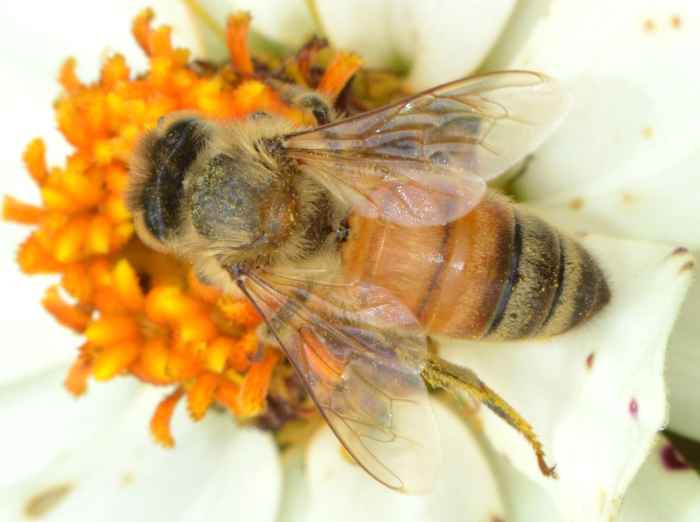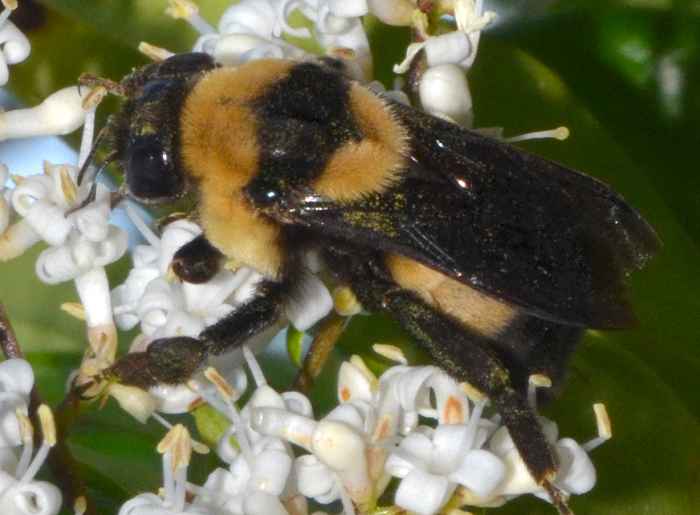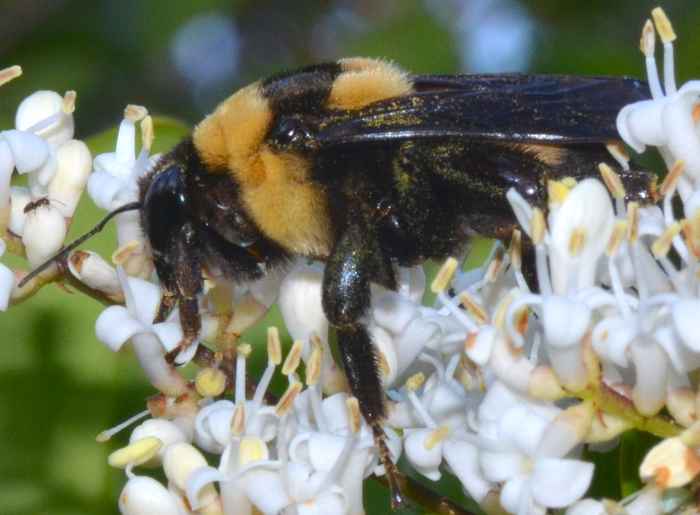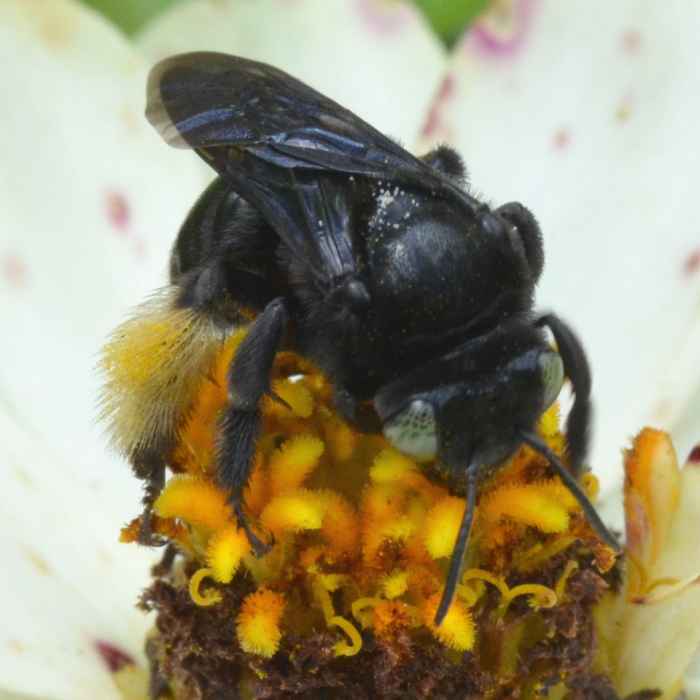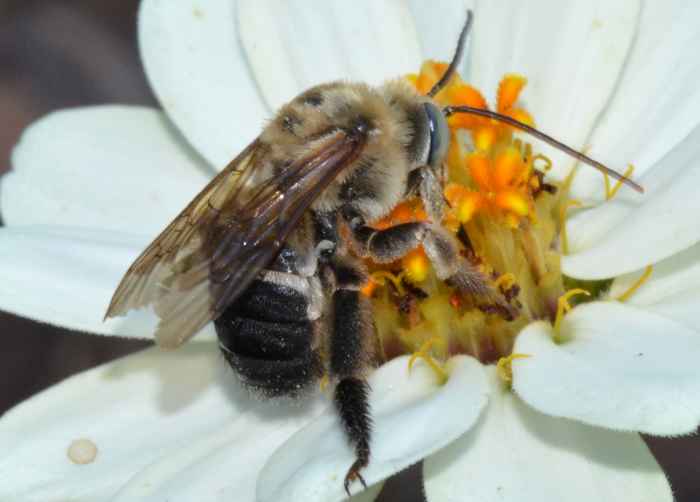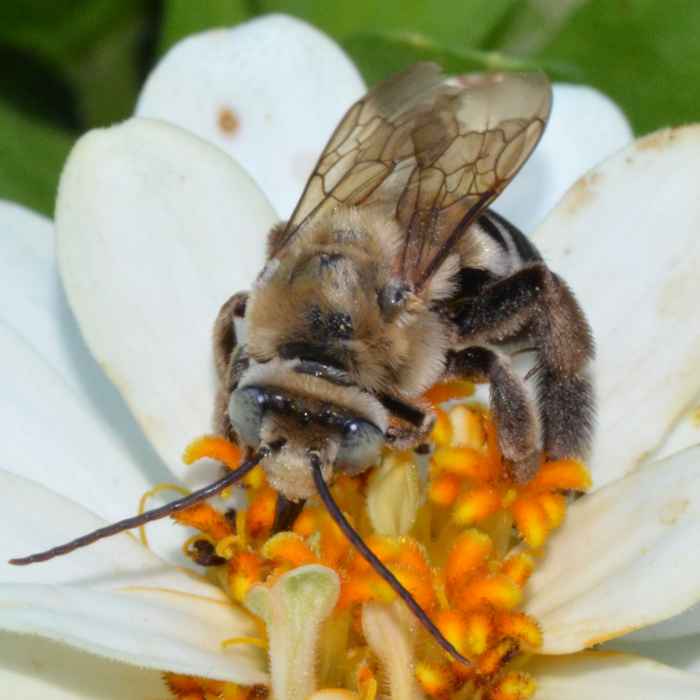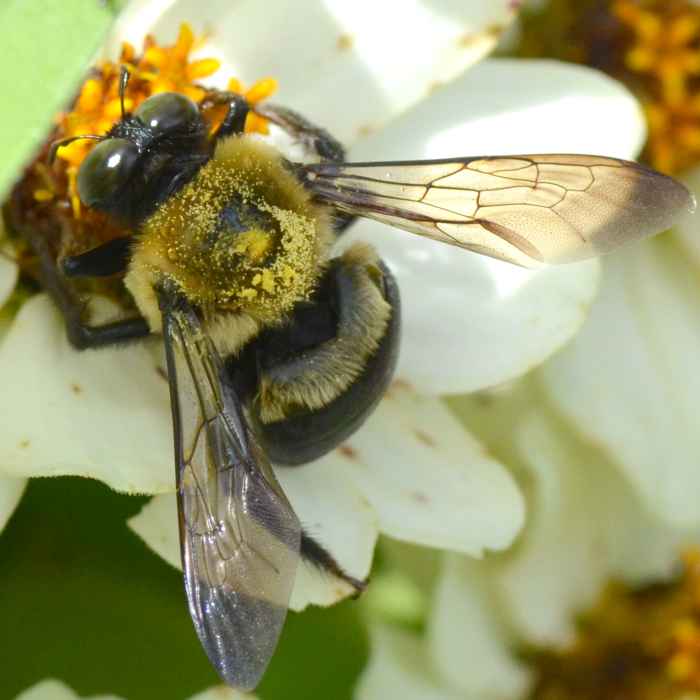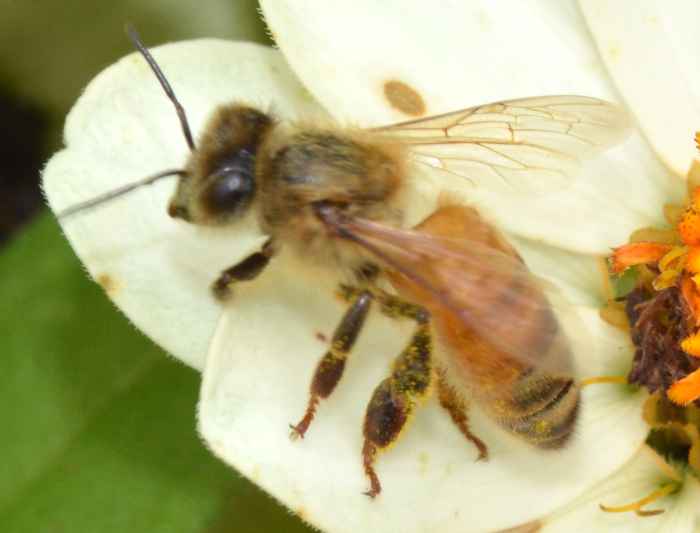 Apis mellifera (Honey Bee). | A Honey Bee (Apis mellifera). Honey bees are not native to the Americas but were introduced by Europeans settlers. There are about six recognized subspecies in our area. Wild bees are mostly hybrids.
bug guide (these photos): http://bugguide.net/node/view/572469 wikipedia: http://en.wikipedia.org/wiki/Western_honey_bee | ||
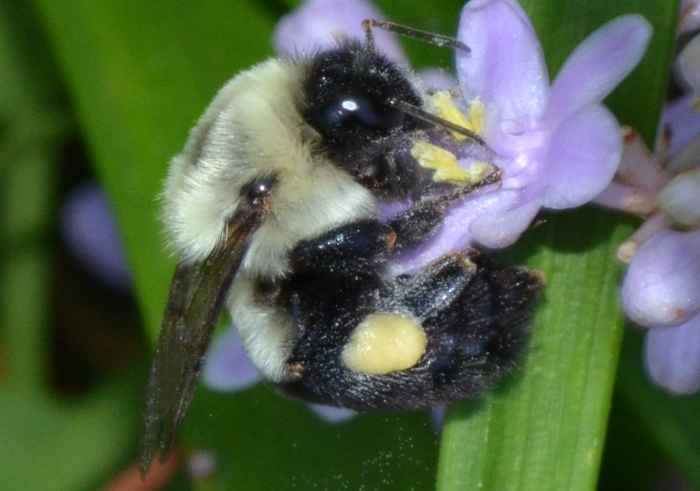 Bombus impatiens (Common Eastern Bumble Bee) ♀. | A typical bumble bee worker. This is the Common Eastern Bumble Bee (Bombus impatiens). The species has unusually large colonies and a very long flight season. It can be found in the Eastern half of the US. bug guide (this photo): http://bugguide.net/node/view/577713 | ||
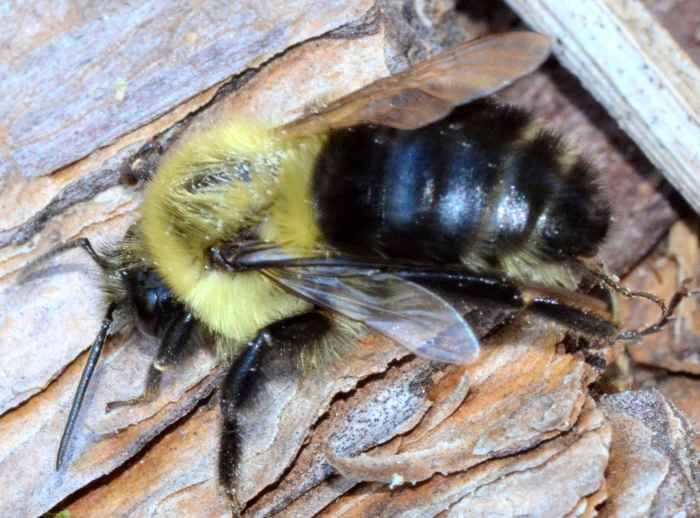 Bombus impatiens (Common Eastern Bumble Bee) ♂. | This specimen is a male of the species Bombus impatiens. Early in the colony cycle, the queen is usually the mother of all males laid. Later workers begin to lay male eggs. New queens and males leave the colony after maturation. Males in particular are forcibly driven out by the workers. bug guide (this photo): http://bugguide.net/node/view/591054 wikipedia: http://en.wikipedia.org/wiki/Bumble_bee | ||
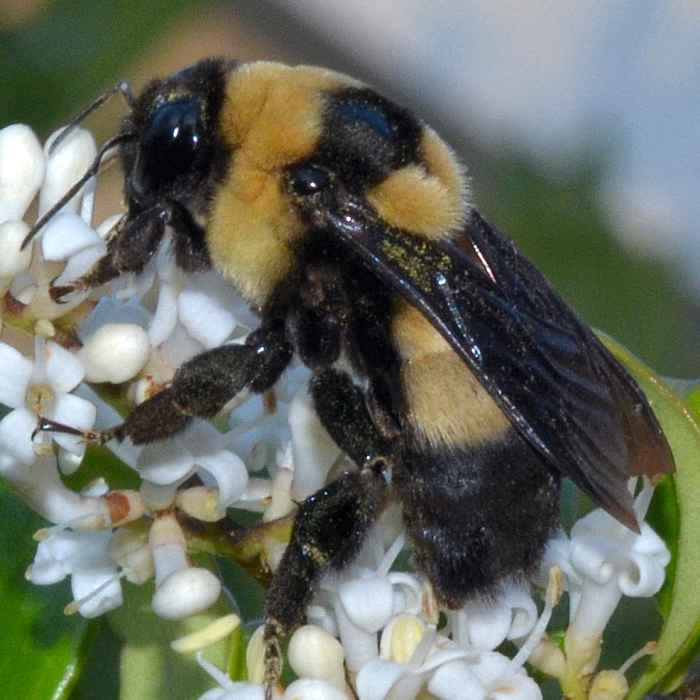 Bombus fraternus (Southern Plains Bumble Bee). | I found this big bumble bee on an evergreen ligustrum (privet) tree. It is a Southern Plains Bumble Bee (Bombus fraternus) which is native to the US east of the Rocky Mountains. This fairly uncommon species has its hairs pressed closely against the body, which distinguishes it from most other "fluffy" species. I believe that this specimen is a queen or a male, which are larger than the workers.
bug guide (these photos): http://bugguide.net/node/view/635540 Discover Life: http://www.discoverlife.org/mp/20q?search=Bombus+fraternus Wikipedia: http://en.wikipedia.org/wiki/Bombus_fraternus | ||
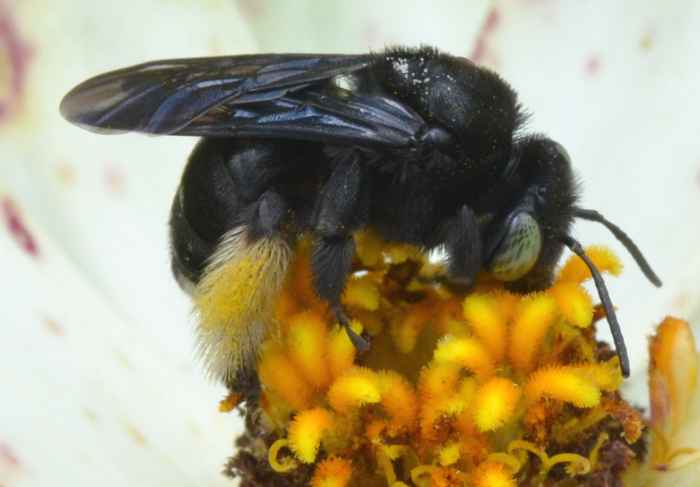 Melissodes bimaculata (Long-Horned Bee (nonspec.)). | A black bee with one pair of legs covered in white/yellow fur. This is Melissodes bimaculata. The genus is wide-spread throughout the US and has over 100 species. The species name "bimaculata" refers to a pair of white spots near the tip of the abdomen, which cannot be seen on these photos.
bug guide (these photos): http://bugguide.net/node/view/573785 discoverlife: http://www.discoverlife.org/20/q?search=Melissodes+bimaculata | ||
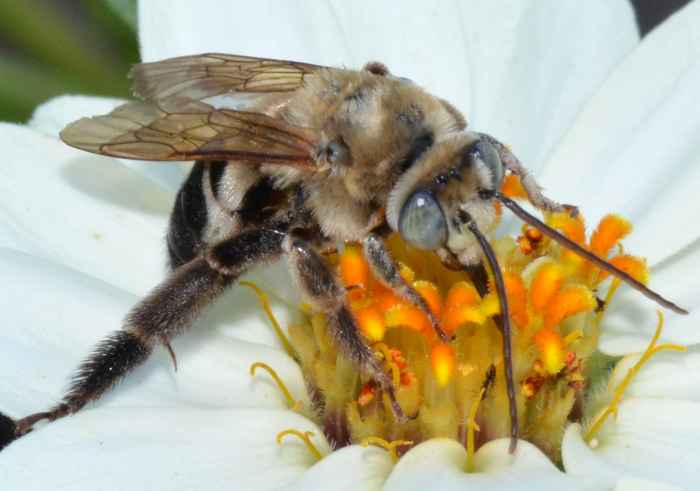 Svastra sp. (Long-Horned Bee (nonspec.)). | We have many of these Long-Horned Bees (Svastra sp.) flying around our petunias and lantanas. Although they have been there for weeks, it took me a long time to shoot a good photo. They are pretty fast and only stop for seconds while taking nectar. This genus has 14 species in our area, which are all robust and hairy.
bug guide (these photos): http://bugguide.net/node/view/569659 | ||
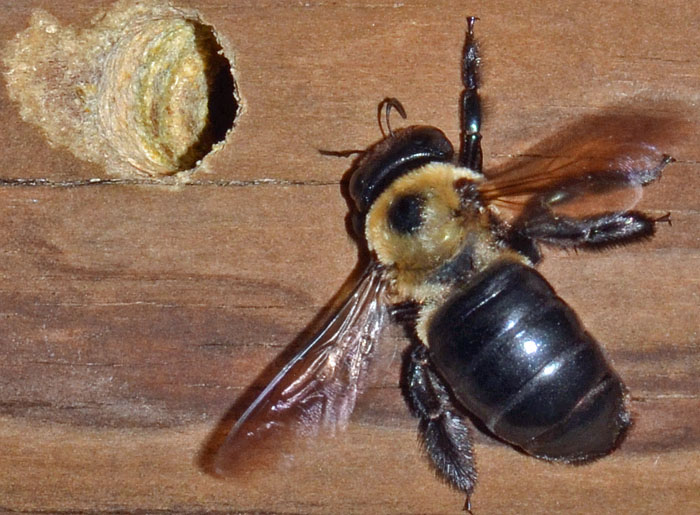 Xylocopa virginica (Eastern Carpenter Bee) ♀. | Female underneath my balcony. From Balduf (see link): "In new nests, female bees chewed their way into the wood, excavating a burrow about 15 mm in diameter. If the grain were oriented vertically, the nests were vertical; if horizontally, then the nests were horizontal with respect to the ground. Galleries extended about 30 to 45 cm in newly completed nests. These older galleries were believed to have been used by several generations of bees. After excavating the gallery, female bees gathered pollen, which was mixed with regurgitated nectar. The pollen mass was placed at the end of a gallery, an egg was laid, and the female placed a partition or cap over the cell composed of chewed wood pulp. This process was repeated until a linear complement of six to eight end-to-end cells was completed." UF: http://edis.ifas.ufl.edu/in257 | ||
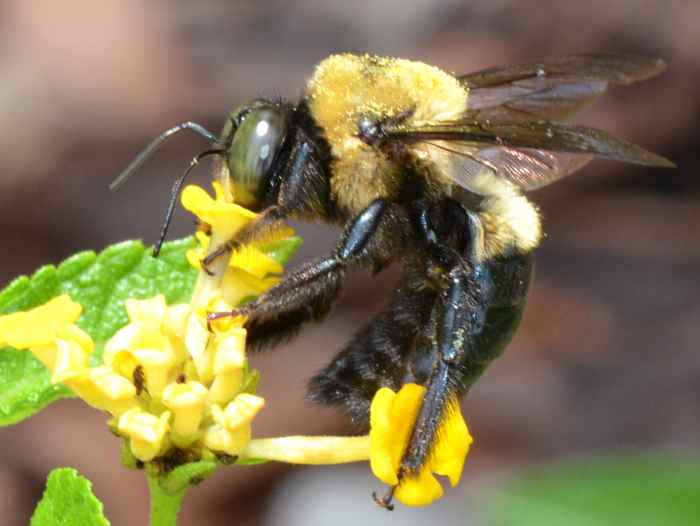 Xylocopa virginica virginica (Eastern Carpenter Bee) ♂. | A rather big bee with yellow "fur" on the thorax and a black hairless abdomen. This is a Common Carpenter Bee (Xylocopa virginica). They build their nests (galleries) in dry wood, especially in conifers. Carpenter bees only rarely damage varnished or painted wood.
bug guide (these photos): http://bugguide.net/node/view/572578 UF: http://edis.ifas.ufl.edu/in257 |

